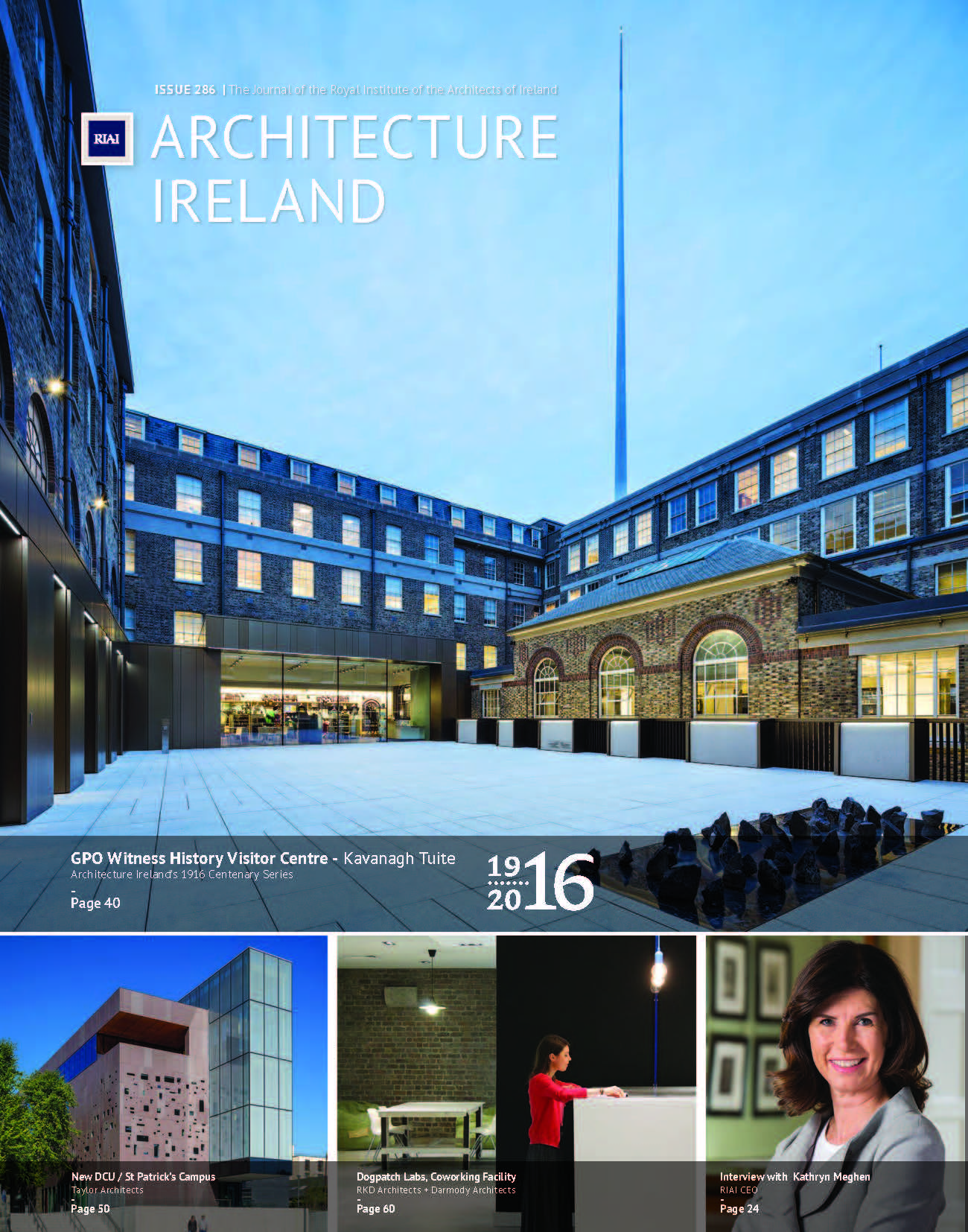Architecture Ireland is the journal of the Royal Institute of the Architects of Ireland. Issue #286 focuses on 1916 Centenary commemorations.
Waterford IT, WIT, UCD, Richview, University College Dublin, Bolton Street, DIT, forbo flooring systems, 3rock, New Market, International Concrete Design Competition, Grapels, Schueco sliding door systems, Simon Open Door, Scott Tallon Walker Award, Client Guidance Note, BCAR, statutory boards, Dublin Strolls, Dr. Gregory Bracken, Architecture Ireland and Forbo, Civic trust, Carr Cotter Naessens, heneghen peng, CPD, urban design committee, philip jackson, james kiernan, architectural technology committee, universal design task force, Isoilde Dillon, John Mitchell, School of Architecture University of Limerick, Norelle Breen, Peter Caroll, Simon McGuinness, exhibition, Amie Siegel
Read more






















